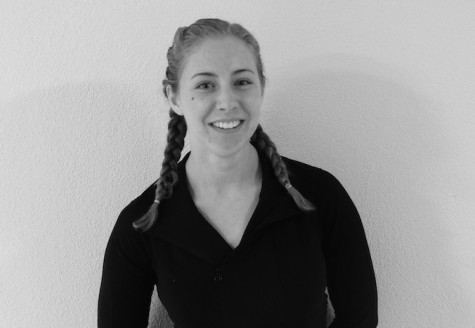IB history project replicating historical propaganda called into question
Use of Swastikas, Nazi tactics prompt student complaints
November 5, 2014
What was intended as an innocent presentation demonstrating past Nazi propaganda in the IB history: 20th century issues class is now being discussed by administration and students regarding its appropriateness.
As part of its current unit on authoritarian states, a group of students in the class replicated Nazi-regime tactics in a presentation Oct. 28. According to senior Sophia Noreen, a member of the presentation group, the goal was to educate fellow peers on common persuasion routes used during the corresponding time period.
In order to accurately simulate these actions, Noreen said students in the group hung Nazi flags with swastikas on them, in addition to wearing traditional Nazi apparel and swastika armbands.
The group also distributed a Nazi-regime test, read German children’s stories targeting Jews and other Nazi victims and finally simulated a Nazi rally to give class members a realistic demonstration of tactics used.
“The project was supposed to be on Nazi propaganda, so our group was supposed to be using Nazi ideals to indoctrinate the class into becoming Nazis,” Noreen said. “We were supposed to use our research about their different tactics and different ways that they brainwashed the youth of the time.”
However, later that day two complaints were filed with school administration taking offense to the presentation after a picture of the Nazi flags appeared on social media, according to Principal Scott Meyers.
“The picture was taken by a student outside of that class and unfortunately that student didn’t have the context of the lesson,” Meyers said. “We’re assuming that the student shared it because they felt offended, but I don’t know if that’s the case.”
Senior Elliot Schwartz, a student in the class, said he agrees with Meyers and believes if students had better understood the intent of the lesson, it wouldn’t have come across as offensive.
“I think the response is legitimate in that it doesn’t have the proper context,” Schwartz said. “Just seeing a swastika in a school building is obviously a very shocking thing. But with the explanation that it was for a history class and we were discussing and studying Hitler and we do similar projects for our other units, I think it’s completely appropriate.”
Another point of questioning brought to light under the recent circumstances is that according to Sara Thompson, director of communications and community relations for the district, policies or practices are not implemented by the district regarding curriculum approval.
“Certainly the departments and the teachers get together and review the curriculum and make sure it’s appropriate,” Thompson said. “Our director of curriculum and instruction reviews it to make sure were meeting standards, but in terms of a review and approval process, that doesn’t exist.”
Because of an increase in awareness of the presentation since Oct. 28, Thompson said additional concerns were voiced to district officials from parents specifically, not students.
According to Meyers, the high school strives to ensure a tolerant and accepting environment for all students while also covering curriculum that may make some uncomfortable.
“We know that it’s our goal here to provide a safe and secure environment for all of the students, and we regret that the classroom lesson negatively impacted some of the students in the school. But the intention of the lesson was to explain propaganda and to actually walk the students through it,” Meyers said.
Additionally students in the IB history: 20th century issues class spent Oct. 29 looking at the consequences of the activity had and how it relates to the propagandas being studied according to Thompson.
After hearing about the controversy of the propaganda presentation over social media and additional news sources, former IB history student and current student at University of California, Berkeley Willy Morrow said he believed the incident was blown out of proportion.
“I found this particular lesson was probably the most insightful thing that I learned in that class. The reason being, is so much of history you just learn about through textbooks, through lectures, and yes that can be helpful for learning history, but not for understanding the complexity,” Morrow said. “What I would say to people who criticize this type of teaching style is that by criticizing it, you are simply furthering the lesson that is trying to be corrected from teaching this way.”
Despite initial concerns and controversy heard around the district, Thompson said she believes the circumstances provide students with an opportunity to learn the impact of the curriculum.
“St. Louis Park is known for being very diverse and very rigorous academically and this is a situation where the two collided,” Thompson said. “I think that this really forced a lot of thinking on the parts of students, parents and staff, as well as the greater community to test what we think about some pretty important history.”
Hear what staff member Ori Etzion thought about the presentation from an additional first-hand perspective.



